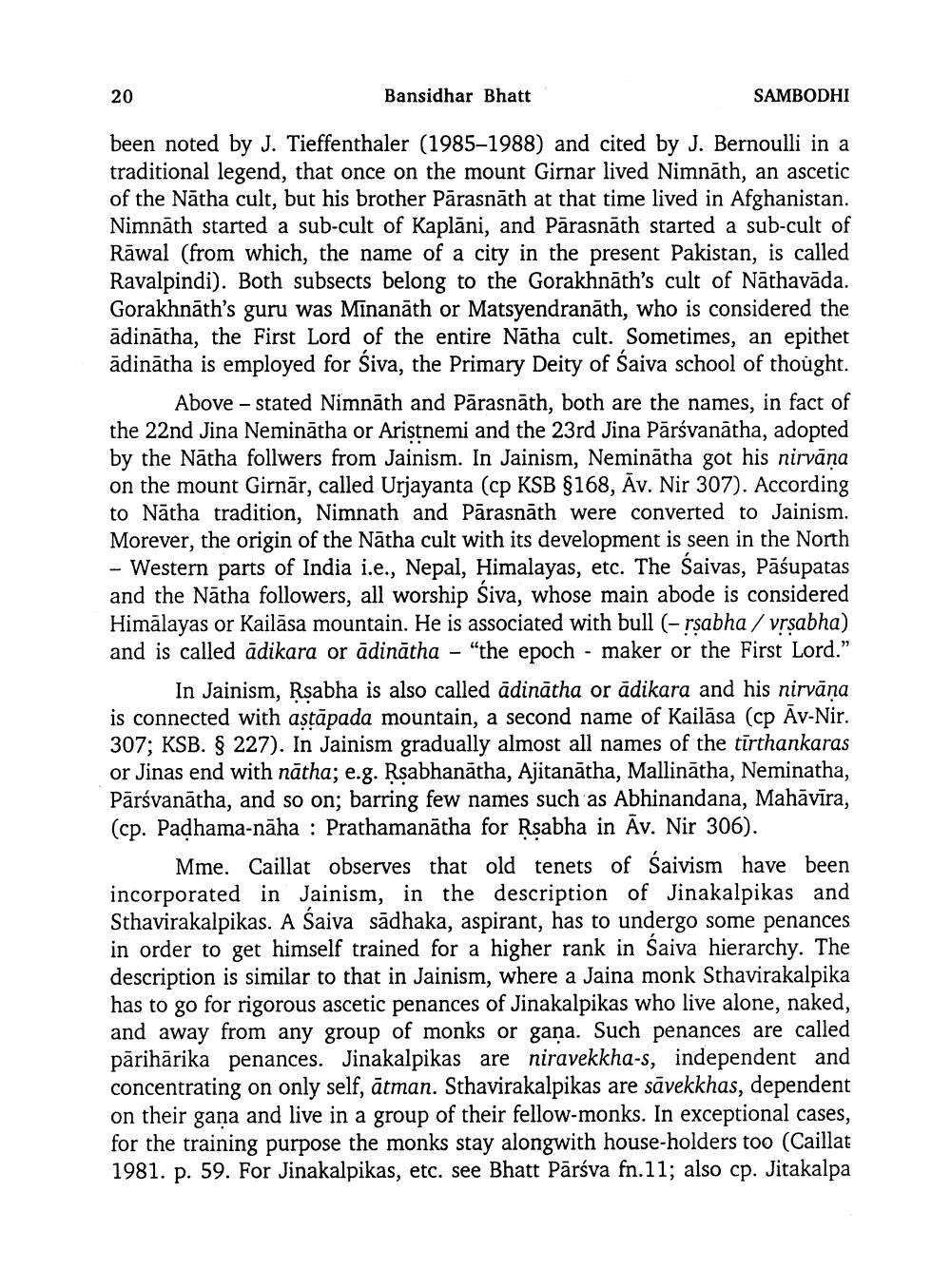________________
20
Bansidhar Bhatt
SAMBODHI
been noted by J. Tieffenthaler (1985-1988) and cited by J. Bernoulli in a traditional legend, that once on the mount Girnar lived Nimnāth, an ascetic of the Nātha cult, but his brother Pārasnāth at that time lived in Afghanistan. Nimnāth started a sub-cult of Kaplāni, and Parasnāth started a sub-cult of Rāwal (from which, the name of a city in the present Pakistan, is called Ravalpindi). Both subsects belong to the Gorakhnāth's cult of Nāthavāda. Gorakhnāth's guru was Minanāth or Matsyendranāth, who is considered the adinātha, the First Lord of the entire Nātha cult. Sometimes, an epithet ādinātha is employed for Siva, the Primary Deity of Saiva school of thought.
Above - stated Nimnāth and Pārasnāth, both are the names, in fact of the 22nd Jina Neminātha or Aristnemi and the 23rd Jina Pārsvanātha, adopted by the Natha follwers from Jainism. In Jainism, Neminātha got his nirvana on the mount Girnār, called Urjayanta (cp KSB 8168, Āv. Nir 307). According to Nātha tradition, Nimnath and Pārasnāth were converted to Jainism. Morever, the origin of the Natha cult with its development is seen in the North - Western parts of India i.e., Nepal, Himalayas, etc. The Saivas, Pāśupatas and the Nātha followers, all worship Siva, whose main abode is considered Himālayas or Kailāsa mountain. He is associated with bull (- rṣabha / vrsabha) and is called ädikara or ādinātha - "the epoch - maker or the First Lord.”
In Jainism, Rsabha is also called ādinātha or ādikara and his nirvana is connected with astāpada mountain, a second name of Kailāsa (cp Āv-Nir. 307; KSB. § 227). In Jainism gradually almost all names of the tīrthankaras or Jinas end with nātha; e.g. Rsabhanātha, Ajitanātha, Mallinātha, Neminatha, Pārsvanātha, and so on; barring few names such as Abhinandana, Mahāvīra, (cd. Padhama-näha : Prathamanātha for Rsabha in Āv. Nir 306).
Mme. Caillat observes that old tenets of Saivism have been incorporated in Jainism, in the description of Jinakalpikas and Sthavirakalpikas. A Saiva sādhaka, aspirant, has to undergo some penances in order to get himself trained for a higher rank in Saiva hierarchy. The description is similar to that in Jainism, where a Jaina monk Sthavirakalpika has to go for rigorous ascetic penances of Jinakalpikas who live alone, naked, and away from any group of monks or gana. Such penances are called pārihārika penances. Jinakalpikas are niravekkha-s, independent and concentrating on only self, ātman. Sthavirakalpikas are sāvekkhas, dependent on their gana and live in a group of their fellow-monks. In exceptional cases, for the training purpose the monks stay alongwith house-holders too (Caillat 1981. p. 59. For Jinakalpikas, etc. see Bhatt Pārśva fn.11; also cp. Jitakalpa




